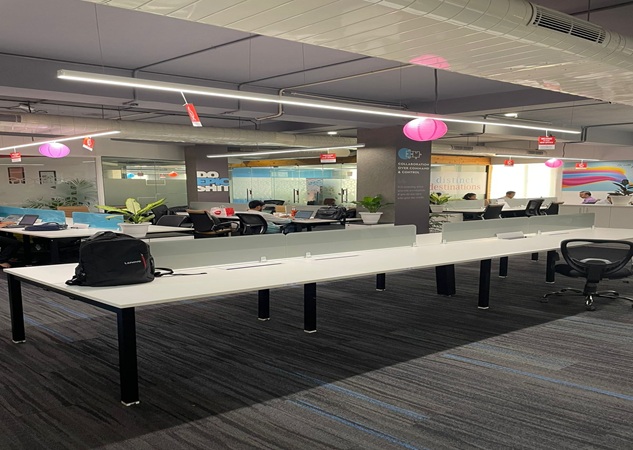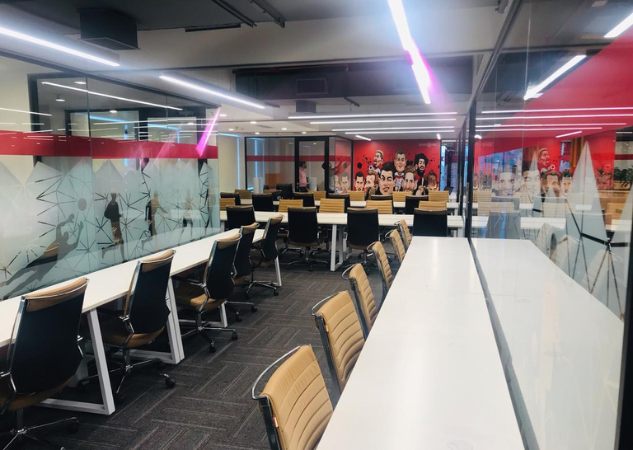Cash flow is the lifeline of any small business, yet managing it effectively can often feel like a balancing act. Without a solid strategy, even profitable businesses can face cash shortages that hinder growth. The good news? With the right tips and tools, you can optimize your cash flow to ensure steady operations and long-term success. This blog dives into 11 actionable cash flow optimization tips that every small business owner needs to know. Let’s explore how to keep your finances healthy and your business thriving!
💡 Are you looking for Coworking space in Gurgaon, Noida or Delhi? We are just a call away.
Call Now: 08999 828282
11 Best Cash Flow Optimization Tips
- Track Your Cash Flow Regularly
- Encourage Early Payments
- Delay Non-Essential Expenses
- Negotiate Better Payment Terms
- Streamline Inventory Management
- Focus on High-Margin Products or Services
- Create a Cash Flow Forecast
- Control Overhead Costs
- Leverage Technology
- Diversify Your Revenue Streams
- Build a Cash Reserve

1. Track Your Cash Flow Regularly
One of the first steps in cash flow management for small businesses is keeping a close eye on your finances. Use tools or software to monitor your income and expenses daily, weekly, or monthly. This helps you spot trends and identify potential cash flow problems early.
2. Encourage Early Payments
Offer discounts or incentives to customers who pay their invoices early. This tactic can improve small business cash flow and reduce the risk of delayed payments. A simple discount of 1-2% for early payments can go a long way.
3. Delay Non-Essential Expenses
To optimize cash flow, postpone any non-critical purchases or expenses. For example, instead of upgrading office equipment immediately, consider waiting until your financial position improves.
4. Negotiate Better Payment Terms
If you have regular suppliers, ask for extended payment terms. This gives you more time to generate income before settling your bills, easing the pressure on your cash flow.
Also Read: How To Manage Your Small Business Finances On The Go
5. Streamline Inventory Management
Overstocking can tie up your cash in unsold products. Use effective cash flow management techniques like demand forecasting to keep inventory levels lean but sufficient to meet customer needs.
6. Focus on High-Margin Products or Services
Shift your focus toward products or services with higher profit margins. By promoting these, you can increase your revenue without a significant rise in expenses, helping to improve small business cash flow.
7. Create a Cash Flow Forecast
A detailed cash flow forecast can help you anticipate periods of low income and plan accordingly. Incorporate strategies to manage cash flow effectively during these times, such as securing a short-term line of credit if needed.
8. Control Overhead Costs
Reduce unnecessary expenses wherever possible. For example, switch to energy-efficient equipment or renegotiate your office lease. Every small saving contributes to better cash flow optimization.
9. Leverage Technology
Use digital tools to automate billing, send payment reminders, and track overdue invoices. These tools simplify managing cash flow in business and reduce the chances of payment delays.
💡 Are you looking for Coworking space in Gurgaon, Noida or Delhi? We are just a call away.
Call Now: 08999 828282
10. Diversify Your Revenue Streams
Adding new revenue sources can help stabilize your cash flow. Whether it’s launching a new product, offering subscription services, or creating digital products, diversifying income can reduce your reliance on a single stream.
11. Build a Cash Reserve
Set aside a portion of your profits as a cash reserve. This reserve acts as a financial cushion during tough times, helping you maintain business operations without scrambling for funds.
Mastering cash flow is key to the survival and success of any small business. By implementing these 11 proven tips, you can gain better control over your finances, ensure smooth operations, and set the stage for growth. However, true optimization goes beyond managing money—it includes creating a cost-efficient workspace that inspires productivity. The Office Pass (TOP) offers flexible and affordable coworking spaces designed to help small businesses thrive. Ready to save costs while boosting efficiency? Call 08999 828282 today and set up your office at The Office Pass!
FREQUENTLY ASKED QUESTIONS (FAQS):
Question: What is cash flow, and why is it important for small businesses?
Answer: Cash flow refers to the money coming into and going out of a business. It is important because it helps a business cover daily expenses, pay employees, and invest in growth. Positive cash flow ensures financial stability, while negative cash flow can lead to challenges like debt or business failure.
Question: How can I increase business cash flow quickly?
Answer: You can increase cash flow by following up on overdue invoices, offering discounts for early payments, reducing unnecessary expenses, and selling any unused assets. These methods help improve cash availability without requiring significant changes to your operations.
Question: What are some cash flow management tips for small businesses?
Answer: Cash flow management involves keeping track of your income and expenses, creating a forecast for future cash flow, reducing costs, and setting aside some money for emergencies. Consistently monitoring cash flow helps avoid surprises and keeps your business running smoothly.
Question: How does financial planning improve small business cash flow?
Answer: Financial planning allows you to predict your income and expenses, helping you make informed decisions. By planning ahead, you can avoid overspending, allocate resources wisely, and ensure that there is always enough cash to meet your business needs.
Question: What are the best practices for managing cash flow in business?
Answer: Best practices include separating personal and business finances, using accounting software to monitor cash flow in real time, negotiating better payment terms with suppliers, and reviewing your financial statements regularly to identify potential issues early.
Question: What are some strategies to improve small business cash flow?
Answer: Some strategies include offering recurring revenue models like subscriptions, increasing sales through upselling or cross-selling, providing seasonal discounts to attract customers during slow periods, and managing inventory carefully to avoid overstocking or excess costs.
Question: How can I manage cash flow during tough times?
Answer: During tough times, you can manage cash flow by delaying non-essential expenses, negotiating payment extensions with suppliers, securing a business line of credit for emergencies, and focusing on cash flow stability rather than short-term profits.
Question: Are there tools or software to help with cash flow optimization?
Answer: Yes, there are several tools like QuickBooks, Xero, and FreshBooks that can help manage cash flow effectively. These tools track income, expenses, and invoices, providing real-time insights that make cash flow optimization easier for small businesses.
Question: What cash flow optimization techniques can small businesses use?
Answer: Small businesses can use techniques such as shortening billing cycles to receive payments faster, automating payment reminders to reduce delays, diversifying income streams to create steady revenue, and reviewing pricing strategies to ensure competitiveness and profitability.
Question: Why is effective cash flow management essential for business growth?
Answer: Effective cash flow management ensures that a business has the funds to invest in opportunities, expand operations, and handle unexpected expenses. It creates a stable financial foundation that supports long-term growth and sustainability.









